3 concepts
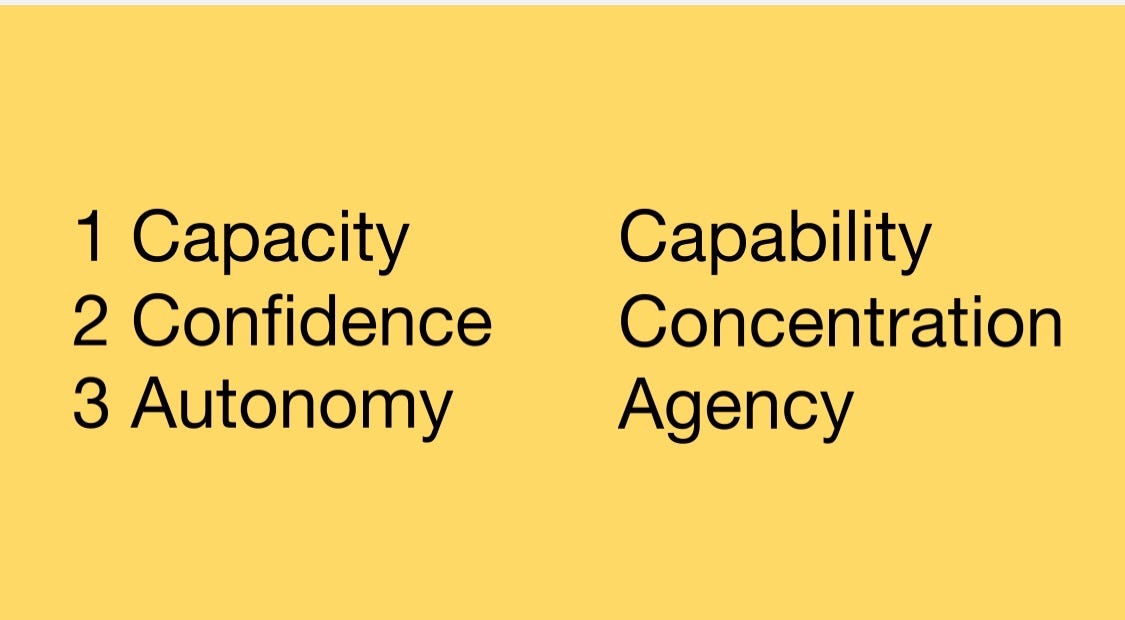
There are multiple ways of thinking about designing for accessibility from a person-centred perspective. This post is about 3 of them.
There is this slidedeck on Dropbox for a workshop to discuss them. All the images in this post are from it.
I’ll use examples from a workshop this week about communication impairments. I was able to chat with a range of people who, due to cerebral palsy and strokes, find it difficult to communicate in many different ways.
Capacity & Capability
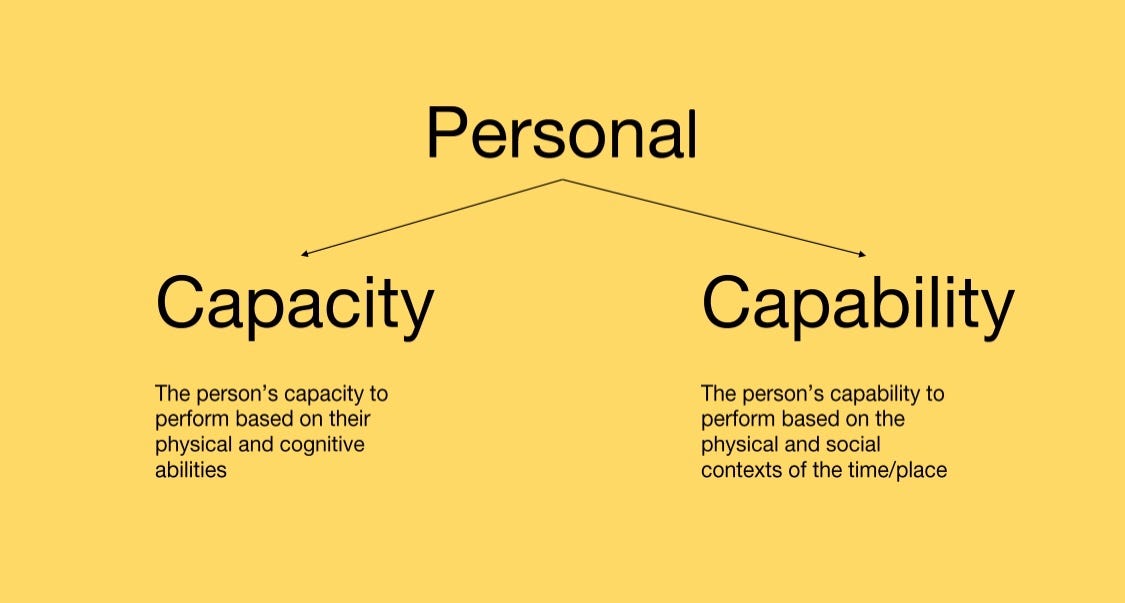
Accessibility is mostly framed in terms of impairment and disability. Generally these ideas are held within the Social Model of Disability.
The Social Model describes the problem of accessibility as being about the failure of design to allow people with different impairments to do what they want. Disability is in the failure of design and social environment not in the person.
This is the standard way of thinking about accessible design and can be split into 2 main activities.
Recognise & respect
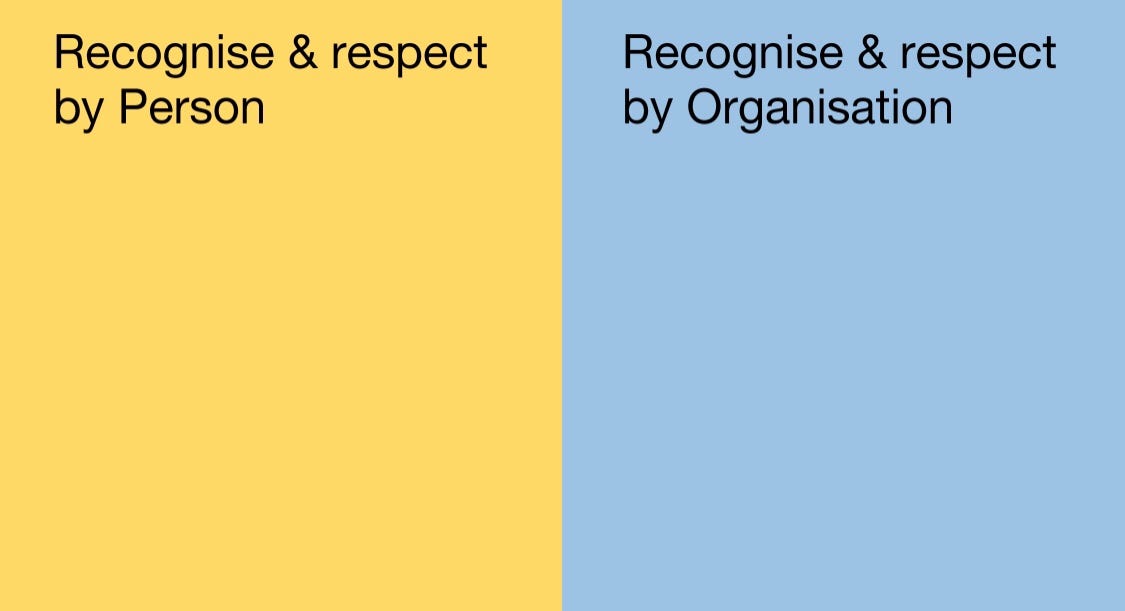
Firstly any impairment must be recognised by both the person and the organisation providing a product or service.
However, this can raise a number of issues about self-recognition (older adults may not identify as disabled) and self identification (impairments can define identity and culture, for example amongst Deaf people and Autistic people).
This is why respect is so important. It is a sense within the person and the sense of how they are encountered.
Simply identifying, diagnosing and naming impairments in order to design products and services is not respectful.
People need to talk, in their own terms, of their sense of impairment and design must work around those differing personal ideas.
Adapt and enable

Adaption is a phrase too often used in a tired way by organisations. Adapting their inaccessible products and services because a person wants to use them. This has built up a negative sense of accessibility as tho it is “unfair” in terms of effort or cost to stop disabling peoples’ lives.
It is sometimes necessary to make this tension overt as it’s the core accessibility problem of viewing the design as an expensive extra.
For example, Kim (a middle aged man who had had a stroke) can no longer read. Coffee shop boards are full of text, used in differing branded ways, that are inaccessible to him.
Staff (and people in the shop queue) are unable to recognise the problem and there is no adaption to enable him to order. He, more often now, drinks coffee at home.
Confidence & Concentration
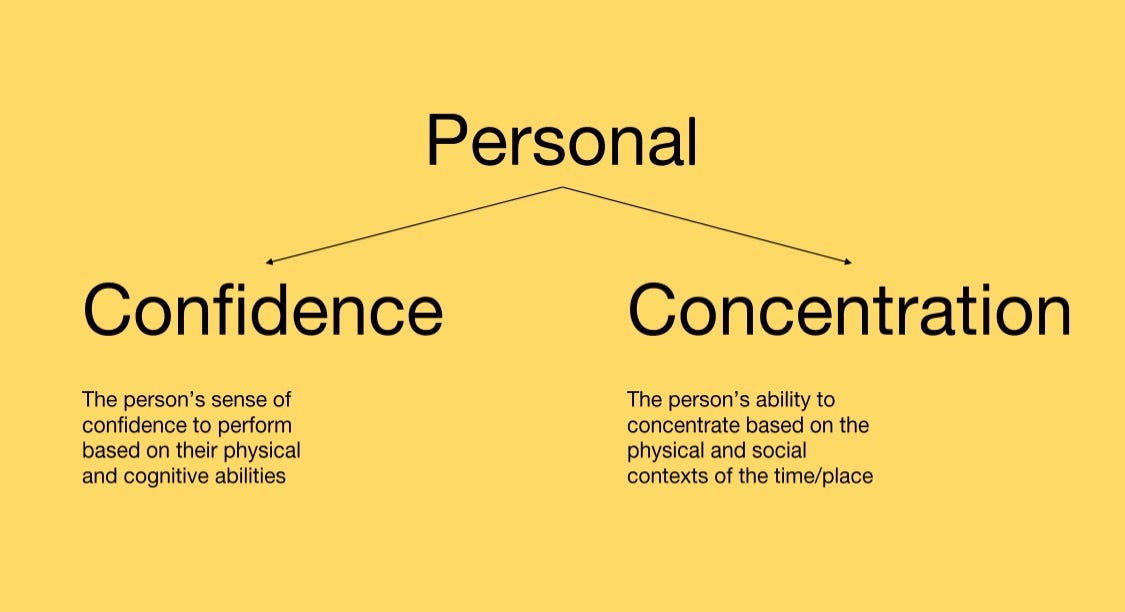
Taking that idea of Kim staying at home more often now, there is another way of thinking about accessibility in terms of confidence and concentration.
Confidence is often in anticipation of what will happen. Many people are not confident that the transport system will be accessible and thus they do not go out. Many people lose confidence as they become more and more tired by the stresses of differing forms of inaccessible design that accrue over the day.
Confidence is within a person but it is heavily affected by the design choices made by organisations.
Concentration is the ability to keep doing the task at hand. For example, it can be hard to concentrate on communicating when there is loud noise behind you. Shop queues and open offices can be hard because the face-to-face conversation is being disrupted by the presence of people who are not directly involved.
Confidence and concentration can also exist in a spiral of inaccessibility. Confidence drops as concentration is disrupted and so on. This affects both the moment of product/service use and the future possibility of use. People anticipate, simulate and predict future experiences based on past experiences. Losing concentration now and losing confidence now has effects on future activities.
Autonomy & Agency

Finally, there are the absolutely foundational issues of autonomy and agency.
Modern design, for example user experience or service design, is obsessed with agency. The user being able to meet their intent to their own satisfaction.
This is fine but it is a delimited sense of person-centred design.
Independence and independent living have been important issues in disability rights for some years now. These relate to autonomy.
This is the idea of not merely meeting user intent but also recognising the sense of individual control over the achievement. Agency can be met without autonomy. However, this can feel patronising and out of personal control. Satisfaction (in terms of agency) can fail because autonomy has not been enabled.
How to enable autonomy is hard. It’s often ignored for that reason.
3 ways – all related
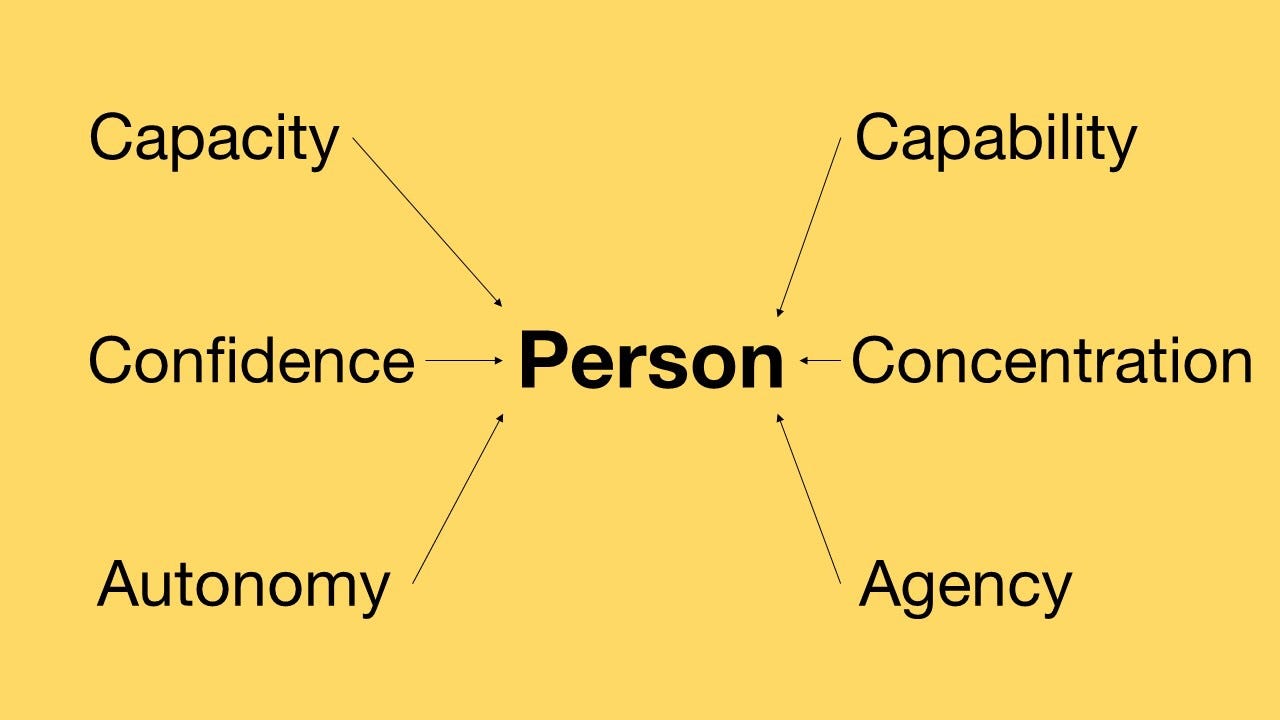
There is no single way of thinking about accessibility. Each of these 3 ways of thinking are related. They are different perspectives on the same issues of disability and inaccessibility.
In terms of a workshop, it is possible to talk about access issues in each of the 3 perspectives and then compare/contrast how they relate.
Capacity and capability are how accessibility is often framed while UX and Service Design are biased to Agency.
Autonomy, confidence and concentration are the factors that are most human-centred but often ignored. They are about the sense of independence and aspiration that underlie human action. We need to respect and enable them, through product and service design, as much as possible.
PS
Here’s some diagrams on this topic that shows the split between perspectives of individual and organisation.
Design from human and organisation perspectives
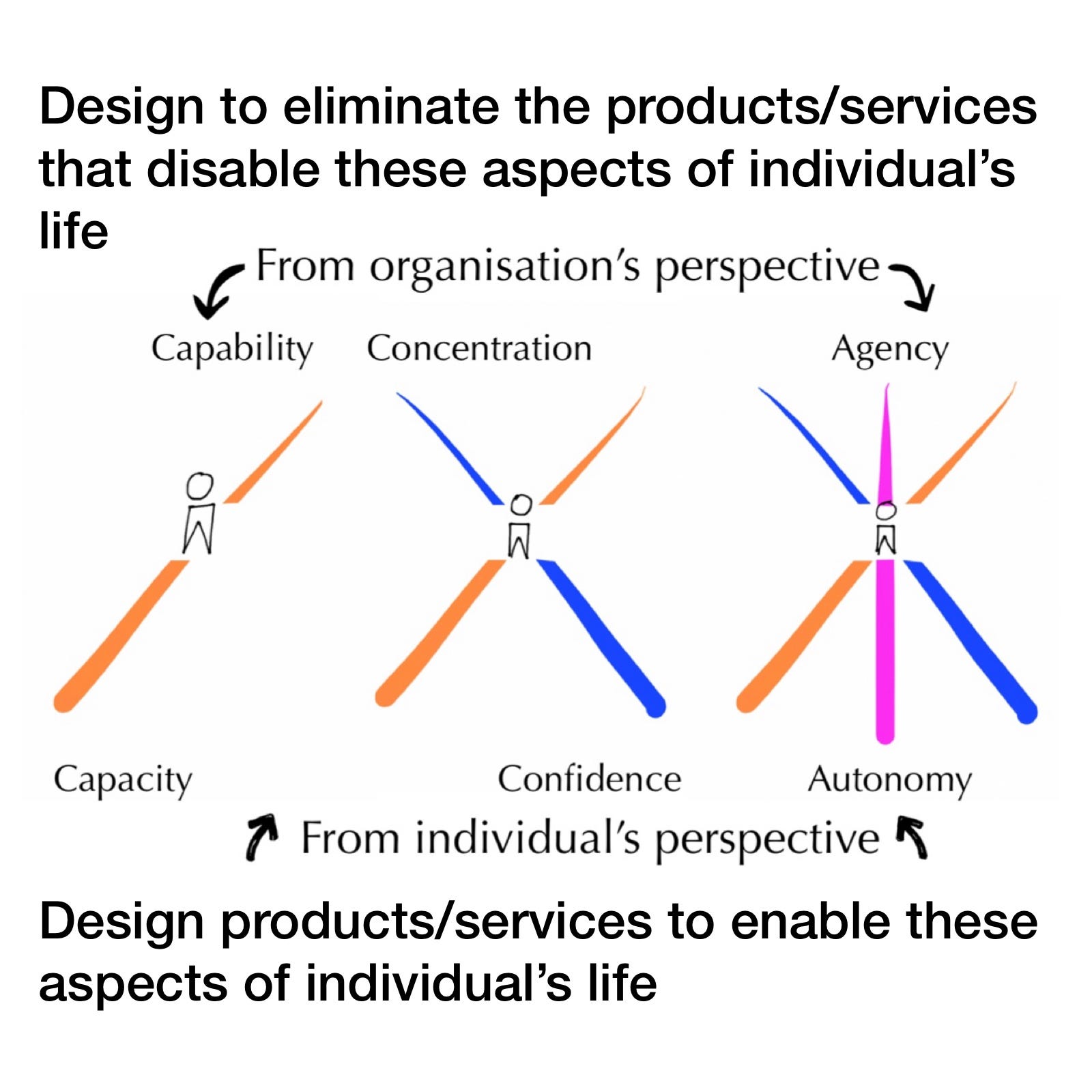
Funnel of user experiences
